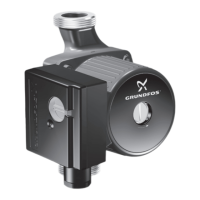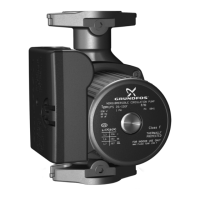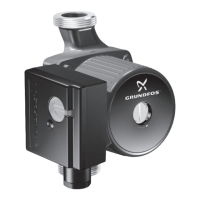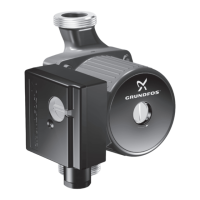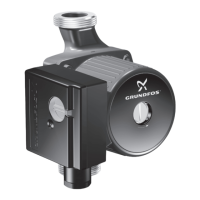English (GB)
12
6.2.4 Selecting the control modes
Proportional pressure
We recommend proportional-pressure mode in variable flow
systems with relatively large pressure losses in the distribution
pipes such as:
• two-pipe heating systems with thermostatic valves and long
distribution pipes
• two-pipe heating systems with thermostatic valves and high
pressure losses in system parts with total flow
• primary circuit pumps in systems with large pressure losses in
the primary circuit.
Note: Proportional-pressure mode is not recommended in
heating systems that includes an automatic bypass valve to
ensure a minimum flow for the heating appliances.
Constant pressure
We recommend constant-pressure mode in variable flow systems
with relatively small pressure losses in the distribution pipes such
as:
• two-pipe heating systems with thermostatic valves and
dimensioned for natural circulation (former gravity systems)
• two-pipe heating systems with thermostatic valves and low
pressure losses in system parts with total flow
• one-pipe heating systems with thermostatic valves or pipe
balancing valves
• underfloor heating systems with zone valves
• primary circuit pumps in systems with small pressure losses in
the primary circuit.
Constant curve
We recommend constant-curve mode in constant-flow systems,
where both a constant flow rate and a constant head are required,
such as:
• heat surfaces
• replacement for uncontrolled circulators, for instance
integrated in boilers.
6.2.5 Externally controlled signal connection: PWM input
signal profile A (heating)
The UPS3 can be controlled via a digital low-voltage pulse-width
modulation (PWM) signal. For instructions on how to set the
connection, see section 7.3 Setting the PWM input signal.
The circulator runs on constant-speed curves depending on the
PWM input signal. The speed decreases when the PWM value
increases. If PWM equals 0, the circulator runs at maximum
speed.
Fig. 16 PWM input signal profile A (heating)
6.2.6 PWM feedback signal - power consumption
The PWM feedback signal offers pump information like in BUS
systems:
• current power consumption (accuracy ± 2 % of PWM signal)
• warning
•alarm
• operation status.
Alarms
Alarm output signals are available because some PWM output
signals are dedicated to alarm information. If a supply voltage is
measured below the specified supply voltage range, the output
signal is set to 75 %. If the rotor is locked due to deposits in the
hydraulics, the output signal is set to 90 % because this alarm
has a higher priority. See fig. 17.
Fig. 17 PWM feedback signal - power consumption
TM06 9136 1617
PWM input signal [%] Pump status
≤ 10 Maximum speed: max.
> 10 / ≤ 84 Variable speed: min. to max.
> 84 / ≤ 91 Minimum speed: IN
> 91/95 Hysteresis area: on/off
> 95 or ≤ 100 Standby mode: off
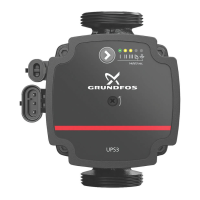
